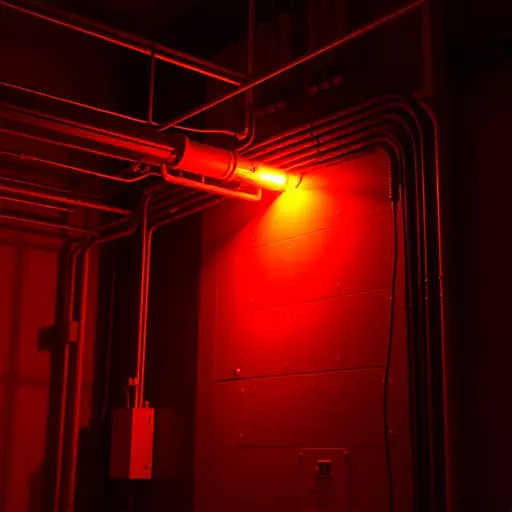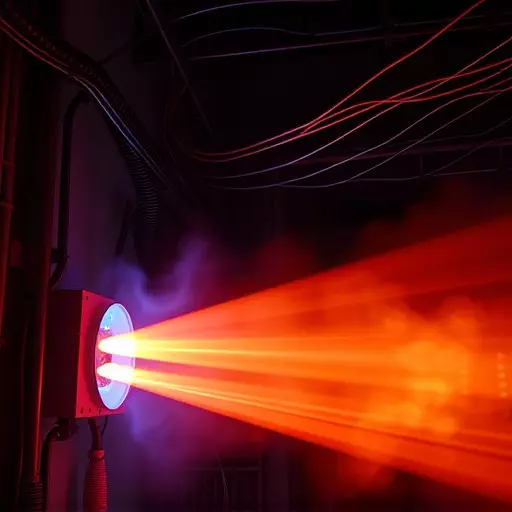The Arc Flash Study Process is a structured approach to assessing and mitigating electrical hazards, adhering to arc flash safety standards (e.g., NFPA 70E). It involves reviewing facility systems, identifying potential arcing locations, calculating incident energy levels, selecting appropriate PPE, and implementing engineering controls. Electrical Hazard Analysis, the core of this process, predicts and prevents arcing events by assessing equipment, fault scenarios, and protective device functions. Regular training, compliance with best practices, and continuous documentation are crucial for minimizing electrical hazards in workspaces.
In the realm of workplace safety, understanding electrical hazards is paramount. This article guides you through the intricate world of electrical risk categories, focusing on essential aspects such as electrical hazard analysis and the critical arc flash study process. We delve into arc flash safety standards, offering a comprehensive overview of regulatory compliance and best practices. By exploring these topics, professionals can effectively identify potential dangers and implement risk mitigation strategies to foster safe electrical workspaces.
- Understanding Electrical Hazards: Categorizing Risks
- The Arc Flash Study Process: A Comprehensive Guide
- Electrical Hazard Analysis: Identifying Potential Dangers
- Arc Flash Safety Standards: Regulatory Compliance and Best Practices
- Implementing Risk Mitigation Strategies for Safe Electrical Workspaces
Understanding Electrical Hazards: Categorizing Risks
Understanding Electrical Hazards: Categorizing Risks
Electrical hazards are pervasive and multifaceted, demanding a systematic approach to assessment and mitigation. The arc flash study process is a critical component in identifying and categorizing these risks. By meticulously examining equipment, components, and work practices, organizations can delineate potential hazards into distinct risk categories. This data-driven approach aligns with the principles of electrical hazard analysis, enabling targeted strategies for improvement.
Arc flash safety standards serve as guidelines to help manage these risks effectively. These standards provide a framework for assessing the likelihood and severity of arc flash incidents, dictating appropriate personal protective equipment (PPE) requirements and safety protocols. Integrating these standards into the arc flash study process ensures that electrical work is conducted with a comprehensive understanding of associated hazards, fostering safer work environments and minimizing exposure to harmful conditions.
The Arc Flash Study Process: A Comprehensive Guide
The Arc Flash Study Process involves a thorough evaluation and documentation of potential arc flash hazards within an electrical system. This comprehensive guide is designed to ensure compliance with established arc flash safety standards, prioritizing worker protection. It begins with a detailed review of the facility’s electrical layout, equipment, and operation procedures. Next, risk assessment methods are employed to identify areas where an arcing event could occur, considering factors such as voltage, current, and proximity to personnel.
The heart of the process lies in performing calculations to determine the incident energy generated during an arc flash, which directly correlates with potential harm. This is followed by the selection of appropriate personal protective equipment (PPE) based on the calculated incident energy levels. Additionally, the study may recommend engineering controls like proper grounding, shielding, and arc detection systems to mitigate risks further. The final step involves documenting findings, creating hazard labels, and providing training materials to ensure ongoing arc flash safety awareness among facility personnel.
Electrical Hazard Analysis: Identifying Potential Dangers
Electrical Hazard Analysis is a systematic approach to identifying and assessing potential dangers associated with electrical systems and equipment. This process involves a thorough examination of work environments, operations, and tasks to determine the risks posed by electrical hazards such as arc flash, electric shock, and electrocution. By conducting an Electrical Hazard Analysis, organizations can implement targeted safety measures, ensuring compliance with arc flash safety standards like NFPA 70E.
The arc flash study process plays a pivotal role in this analysis. It involves the evaluation of electrical systems’ design, operation, and maintenance to predict and mitigate arcing events. This includes studying fault scenarios, equipment ratings, and protective device functions. Once potential hazards are identified, appropriate personal protective equipment (PPE) guidelines can be established, and safe work practices can be developed to minimize risks during tasks like high-voltage maintenance or installation works.
Arc Flash Safety Standards: Regulatory Compliance and Best Practices
Arc Flash Safety Standards play a crucial role in mitigating electrical hazards and ensuring regulatory compliance. Many industries are now mandating the implementation of an Arc Flash Study Process, which involves a thorough electrical hazard analysis to identify potential risks associated with arc flash events. This process includes evaluating equipment design, operational procedures, and personal protective equipment (PPE) requirements.
Best practices dictate regular updates to arc flash safety standards, reflecting advancements in technology and research. Organizations should adopt a comprehensive approach by involving qualified personnel to conduct the study, utilizing specialized software for accurate calculations, and providing clear documentation. Additionally, promoting awareness among employees about these standards and proper PPE usage is essential for creating a safer work environment.
Implementing Risk Mitigation Strategies for Safe Electrical Workspaces
Implementing robust risk mitigation strategies is paramount for creating safe electrical workspaces, mitigating potential hazards, and ensuring compliance with arc flash safety standards. The process begins with a comprehensive electrical hazard analysis that identifies risks specific to each job site. This involves evaluating factors like equipment condition, work tasks, and personal protective equipment (PPE) availability. Once identified, hazards are categorized into risk levels, guiding the selection of appropriate safety measures.
For instance, an arc flash study process is crucial in quantifying the energy released during electrical arcing events, helping to determine the necessary PPE requirements. By combining these strategies with regular training and maintenance practices, workplaces can significantly reduce the likelihood and impact of electrical hazards, fostering a safer environment for workers.


